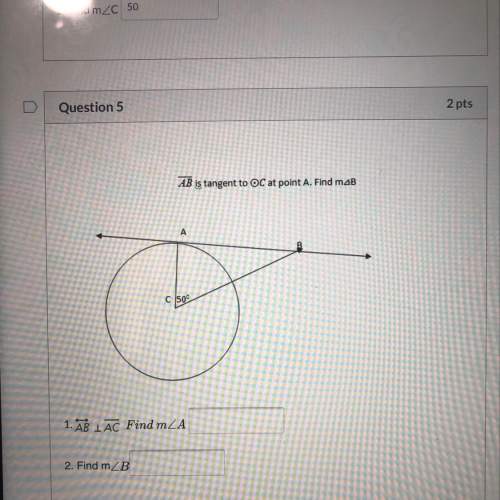
Mathematics, 26.09.2019 19:00 kymberlyasher
Use slope-intercept form to write the equation of a line that has a slope of −3 and passes through the point (1, −5).
use the drop-down menus to select the proper value for each variable that is substituted into the slope-intercept equation.
y =
x =
m =

Answers: 3


Another question on Mathematics

Mathematics, 20.06.2019 18:04
Mp model with mathematics explain how the number of text messages dario sent and the cost form an arithmetic sequence.then write an expression to find dario's text messaging bill if he sends n text messages over 250.
Answers: 2

Mathematics, 21.06.2019 15:30
The table below represents a linear function f(x) and the equation represents a function g(x): x f(x) −1 −5 0 −1 1 3 g(x) g(x) = 2x − 7 part a: write a sentence to compare the slope of the two functions and show the steps you used to determine the slope of f(x) and g(x). (6 points) part b: which function has a greater y-intercept? justify your answer. (4 points)
Answers: 3

Mathematics, 21.06.2019 20:00
The graph and table shows the relationship between y, the number of words jean has typed for her essay and x, the number of minutes she has been typing on the computer. according to the line of best fit, about how many words will jean have typed when she completes 60 minutes of typing? 2,500 2,750 3,000 3,250
Answers: 3

Mathematics, 21.06.2019 21:40
Write the contrapositive of the conditional statement. determine whether the contrapositive is true or false. if it is false, find a counterexample. a converse statement is formed by exchanging the hypothesis and conclusion of the conditional. a) a non-converse statement is not formed by exchanging the hypothesis and conclusion of the conditional. true b) a statement not formed by exchanging the hypothesis and conclusion of the conditional is a converse statement. false; an inverse statement is not formed by exchanging the hypothesis and conclusion of the conditional. c) a non-converse statement is formed by exchanging the hypothesis and conclusion of the conditional. false; an inverse statement is formed by negating both the hypothesis and conclusion of the conditional. d) a statement not formed by exchanging the hypothesis and conclusion of the conditional is not a converse statement. true
Answers: 1
You know the right answer?
Use slope-intercept form to write the equation of a line that has a slope of −3 and passes through t...
Questions


History, 10.11.2021 19:00


Biology, 10.11.2021 19:00

Computers and Technology, 10.11.2021 19:00

Biology, 10.11.2021 19:00





Physics, 10.11.2021 19:00


Mathematics, 10.11.2021 19:00



Mathematics, 10.11.2021 19:00


English, 10.11.2021 19:00






